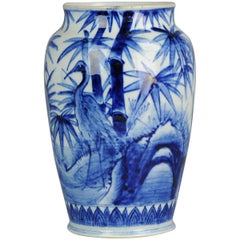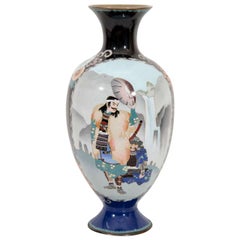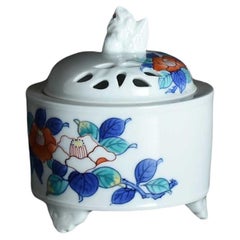Japanese Ceramics
19th Century Meiji Antique Japanese Ceramics
Earthenware
Early 20th Century Showa Japanese Ceramics
Pottery
Mid-20th Century Japonisme Japanese Ceramics
Ceramic, Porcelain
19th Century Antique Japanese Ceramics
Enamel
Mid-20th Century Japonisme Japanese Ceramics
Ceramic, Porcelain
Mid-20th Century Japonisme Japanese Ceramics
Ceramic, Porcelain
Mid-20th Century Edo Japanese Ceramics
Ceramic, Porcelain
Mid-20th Century Japonisme Japanese Ceramics
Ceramic, Porcelain
1960s Chinoiserie Vintage Japanese Ceramics
Porcelain
21st Century and Contemporary Meiji Japanese Ceramics
Gold
19th Century Meiji Antique Japanese Ceramics
Bronze
21st Century and Contemporary Japanese Ceramics
Porcelain
19th Century Meiji Antique Japanese Ceramics
Porcelain
Late 19th Century Meiji Antique Japanese Ceramics
Enamel
Early 20th Century Taisho Japanese Ceramics
Ceramic
Early 20th Century Meiji Japanese Ceramics
Porcelain
Early 1900s Meiji Antique Japanese Ceramics
Ceramic, Stoneware
Early 20th Century Meiji Japanese Ceramics
Porcelain
Early 20th Century Meiji Japanese Ceramics
Porcelain
Mid-20th Century Japonisme Japanese Ceramics
Ceramic, Porcelain
21st Century and Contemporary Meiji Japanese Ceramics
Porcelain
1910s Japonisme Vintage Japanese Ceramics
Ceramic
Mid-20th Century Japonisme Japanese Ceramics
Ceramic, Porcelain
1980s Showa Vintage Japanese Ceramics
Porcelain
Mid-20th Century Japonisme Japanese Ceramics
Ceramic, Porcelain
Mid-19th Century Japonisme Antique Japanese Ceramics
Ceramic, Porcelain
Mid-20th Century Japonisme Japanese Ceramics
Ceramic, Porcelain
Mid-20th Century Japonisme Japanese Ceramics
Ceramic, Porcelain
Mid-20th Century Japonisme Japanese Ceramics
Ceramic, Porcelain
Mid-20th Century Japonisme Japanese Ceramics
Ceramic, Porcelain
Mid-20th Century Japonisme Japanese Ceramics
Ceramic, Porcelain
Mid-20th Century Japonisme Japanese Ceramics
Ceramic, Porcelain
Mid-19th Century Japonisme Antique Japanese Ceramics
Ceramic, Porcelain
Mid-20th Century Japonisme Japanese Ceramics
Ceramic, Porcelain
Mid-20th Century Japonisme Japanese Ceramics
Ceramic, Porcelain
Mid-20th Century Japonisme Japanese Ceramics
Ceramic
Mid-20th Century Japonisme Japanese Ceramics
Ceramic, Porcelain
Mid-20th Century Japonisme Japanese Ceramics
Ceramic, Porcelain
Mid-20th Century Japonisme Japanese Ceramics
Ceramic, Porcelain
Mid-20th Century Japonisme Japanese Ceramics
Ceramic, Porcelain
Mid-20th Century Japonisme Japanese Ceramics
Ceramic, Porcelain
Mid-20th Century Japonisme Japanese Ceramics
Ceramic, Porcelain
Mid-20th Century Showa Japanese Ceramics
Earthenware, Pottery
Mid-20th Century Showa Japanese Ceramics
Earthenware, Pottery
Mid-20th Century Edo Japanese Ceramics
Ceramic
21st Century and Contemporary Meiji Japanese Ceramics
Porcelain
Late 19th Century Other Antique Japanese Ceramics
Ceramic
19th Century Meiji Antique Japanese Ceramics
Metal, Bronze
19th Century Meiji Antique Japanese Ceramics
Metal, Bronze
Late 19th Century Meiji Antique Japanese Ceramics
Pottery
21st Century and Contemporary Meiji Japanese Ceramics
Gold
19th Century Meiji Antique Japanese Ceramics
Porcelain
Early 20th Century Meiji Japanese Ceramics
Porcelain
1690s Edo Antique Japanese Ceramics
Porcelain
19th Century Meiji Antique Japanese Ceramics
Porcelain
Mid-19th Century Edo Antique Japanese Ceramics
Porcelain
Early 1900s Meiji Antique Japanese Ceramics
Ceramic, Stoneware
Late 19th Century Antique Japanese Ceramics
Ceramic, Porcelain




